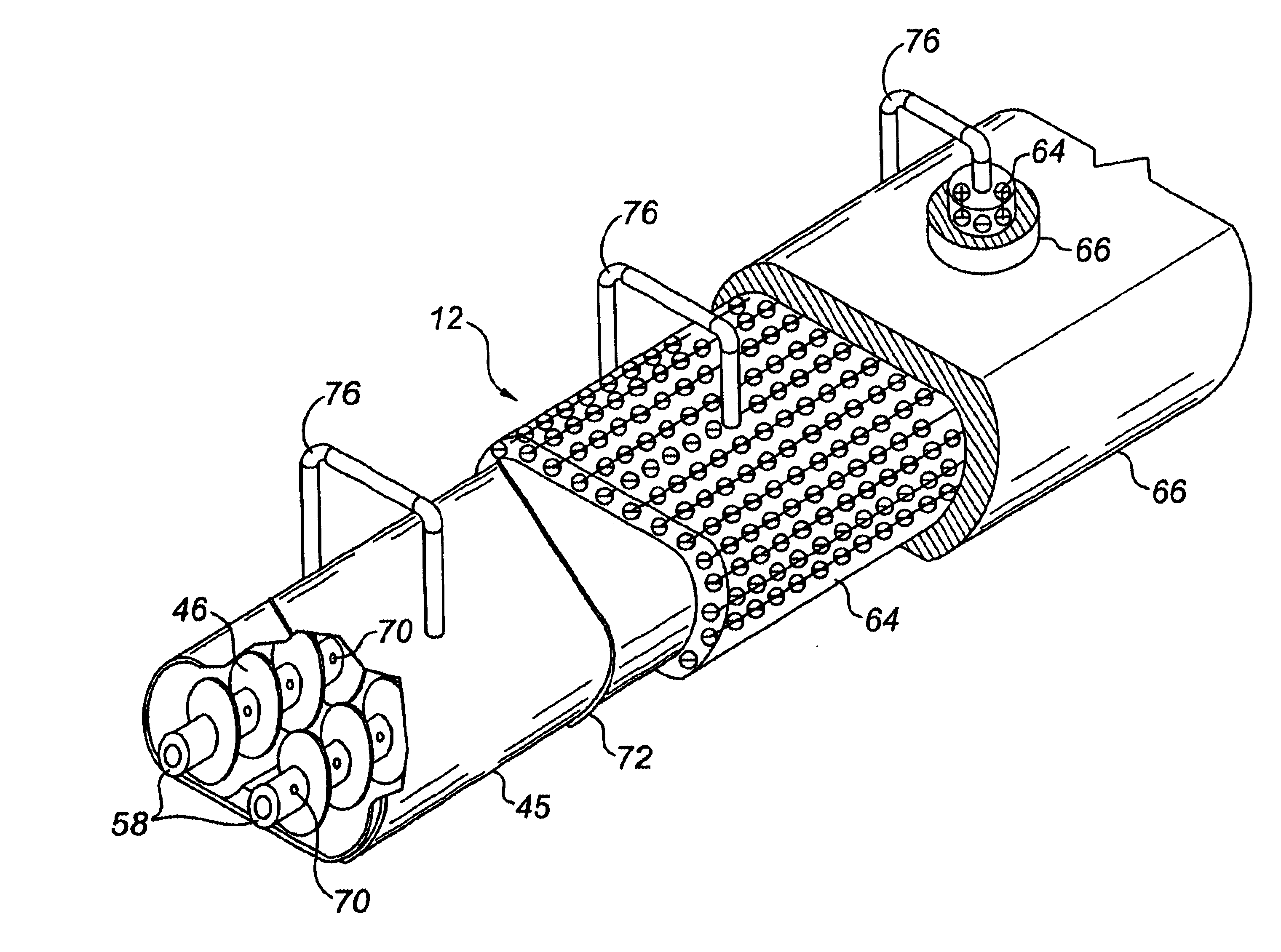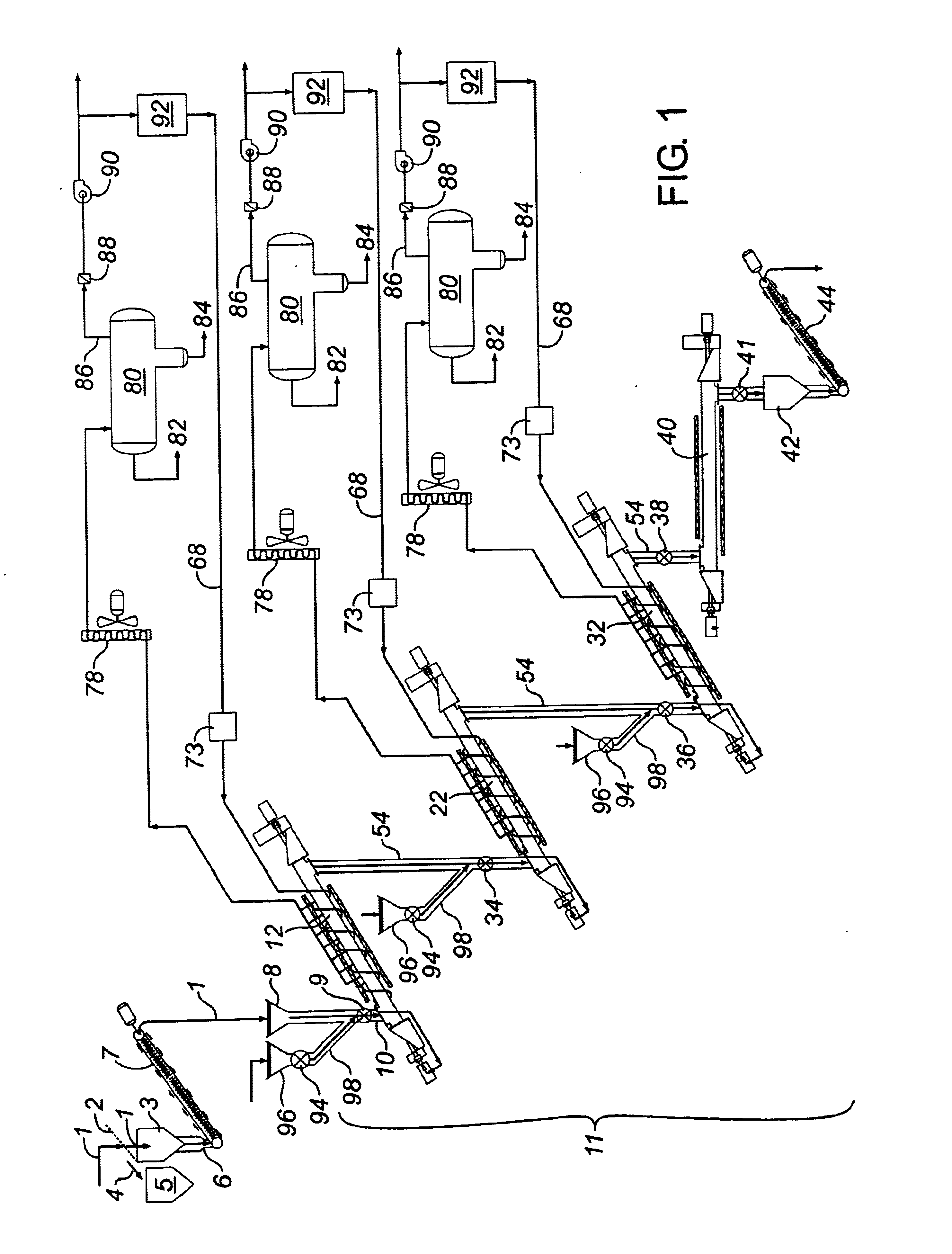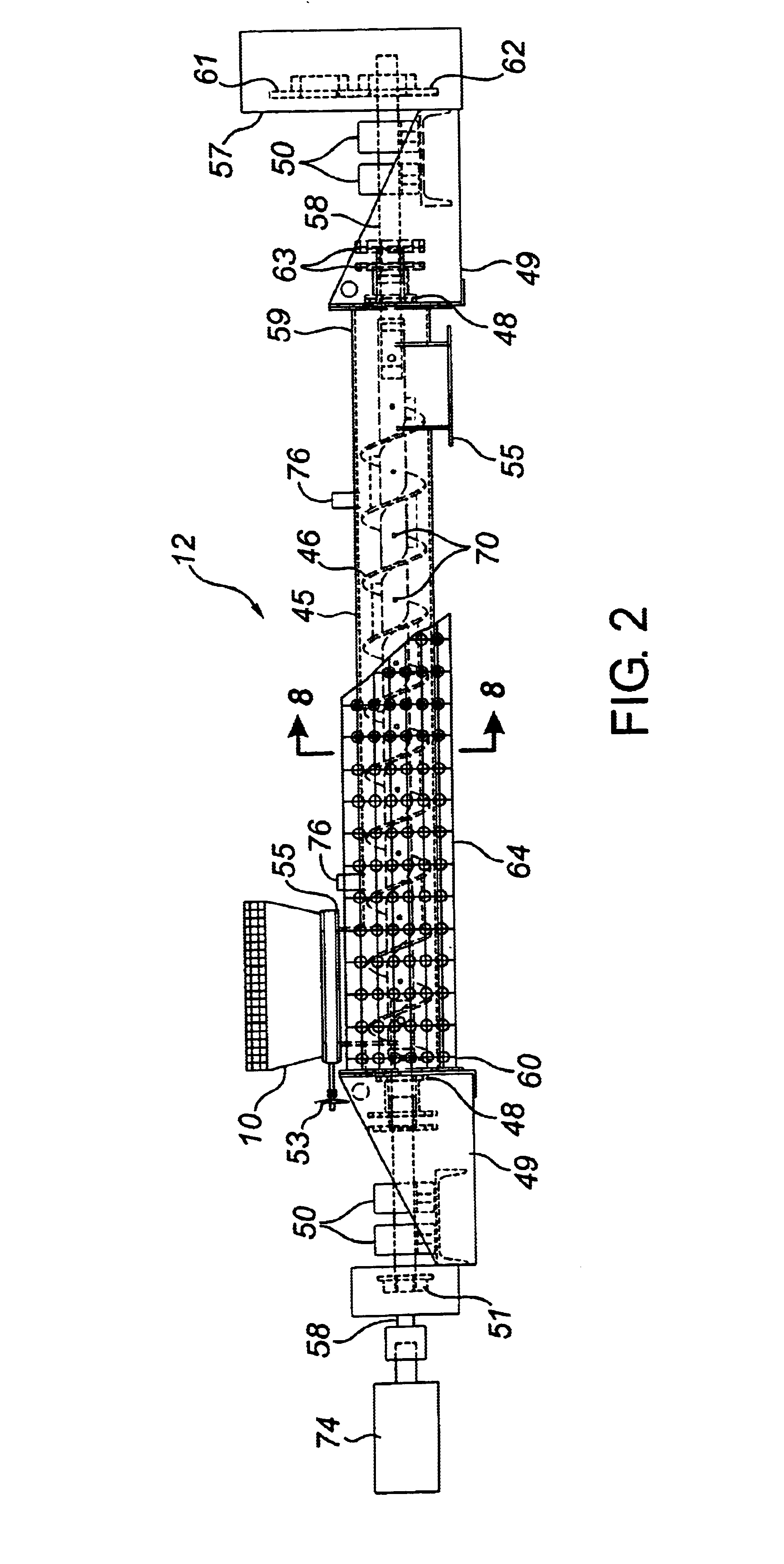Thermal remediation process
a technology of thermal remediation and process, applied in the direction of combustion process, lighting and heating apparatus, mechanical machines/dredgers, etc., can solve the problems of high temperature, ineffective removal techniques of high boiling point organic materials such as coal tars or asphalt, etc., and achieve the effect of energy efficiency
- Summary
- Abstract
- Description
- Claims
- Application Information
AI Technical Summary
Benefits of technology
Problems solved by technology
Method used
Image
Examples
example 1
In this example, each of the three screw conveyors was operated at the same temperature, as shown in Table 2. The Table 2 results show treatment performance improved with operating temperature. The best results were achieved at the operating temperature of 427° C. (800° F.) in which the residual hydrocarbon contamination was <10 mg / kg, or well below the regulated criteria for remediated soils in Alberta, Canada.
TABLE 2Processed Material Hydrocarbon Concentrationas a function of Maximum Operating TemperatureMaximum Temperature ° C. (° F.)Total Petroleum Hydrocarbon mg / kg204 (400)34,510260 (500)6,200316 (600)250427 (800)<10538 (1000)<10
example 2
Below is example data depicting the benefits of operating the thermal screws under a vacuum. The pilot plant was operated at a capacity of 45.4 kg / hr (100 lb / hr), with a vacuum pressure of 20.7 kPa (3 psia), with a hot gas recycle flow rate of 10 L / min. Screw rotational speed was 2 rpm and less. The three screw conveyors were configured to operate at the temperatures 204° C. (400° F.) in screw #1, 204° C. (400° F.) in screw #2, and 204° C. (400° F.) in screw #3.
Table 3 shows the results. Compared are the reductions in hydrocarbon concentrations for the test run versus the concentrations in the original material. The results show two major effects from the applied vacuum, namely; significant vaporized components above the operating temperature of 204° C. and the effect of pyrolysis as depicted in an increase the 482° C. Post Test 1 hydrocarbon concentration. Operating the unit under a vacuum increased the fractions and quantities vaporized making the process more energy efficient.
TAB...
example 3
Pyrolysis Example
Tests using the equipment described above were conducted to evaluate the degree of metal encapsulation using a carbon binder under pyrolysis process conditions. Analytical leaching tests were conducted to determine the effectiveness of encapsulation.
The pilot plant was operated at a capacity of 45.4 kg / hr (100 lb / hr), for a vacuum pressure of 20.7 kPa (3 psia), with a hot gas recycle flow rate of 10 L / min. Screw rotational speed was 2 rpm and less. The three screw conveyors were configured to operate at the temperatures 204° C. (400° F.) in screw #1, 427° C. (800° F.) in screw #2, and 538° C. (1000° F.) in screw #3.
The results provided in Table 5 show major reduction of the leachable metal from the original material as compared to the material subjected to desorption and encapsulation during pyrolysis. As shown in Table 5, metal encapsulation achieved 2 orders of magnitude reduction for pyrolysis with encapsulation of the following metals.
TABLE 5Leachable Metals as ...
PUM
| Property | Measurement | Unit |
|---|---|---|
| Temperature | aaaaa | aaaaa |
| Temperature | aaaaa | aaaaa |
| Temperature | aaaaa | aaaaa |
Abstract
Description
Claims
Application Information
 Login to View More
Login to View More - R&D
- Intellectual Property
- Life Sciences
- Materials
- Tech Scout
- Unparalleled Data Quality
- Higher Quality Content
- 60% Fewer Hallucinations
Browse by: Latest US Patents, China's latest patents, Technical Efficacy Thesaurus, Application Domain, Technology Topic, Popular Technical Reports.
© 2025 PatSnap. All rights reserved.Legal|Privacy policy|Modern Slavery Act Transparency Statement|Sitemap|About US| Contact US: help@patsnap.com



